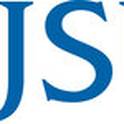
The mechanism of heel pressure ulcers after hip surgery is not entirely understood. The purpose of this one-group, prospective, repeated-measures design study was to examine how the external pressure of the bed surface affects heel skin oxygen tension in adults on the first 3 days after hip surgery. Transcutaneous oxygen sensors were placed on the plantar surface of each foot, close to the heels. Measures were taken on room air and with an oxygen challenge with the heels (1) suspended above the bed surface (preload), (2) on the bed surface for 15 minutes (loading), and (3) again suspended above the bed surface for 15 minutes (unloading). Eighteen hip surgery patients (mean age 58.3±16.1 years) from two hospitals participated. When compared with preload on room air, both loading and unloading on all 3 days resulted in a reduction in heel oxygen tension bilaterally (p<0.001). Heel oxygenation decreased without the anticipated hyperemic response, raising the question of whether this is a sign of increased pressure ulcer risk. Further work is needed to understand why this short period of external pressure results in decreased oxygenation and why oxygen tension does not return to baseline when pressure is removed.
Available at: http://works.bepress.com/vivian_wong/5/
